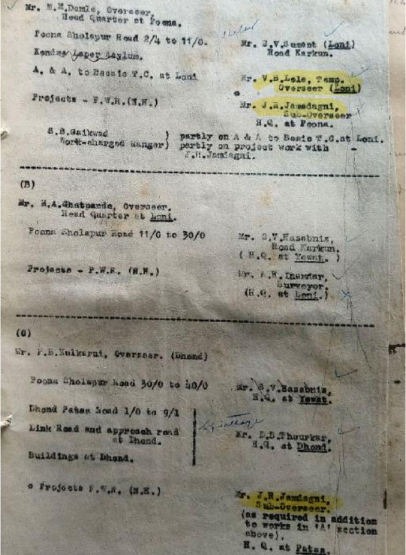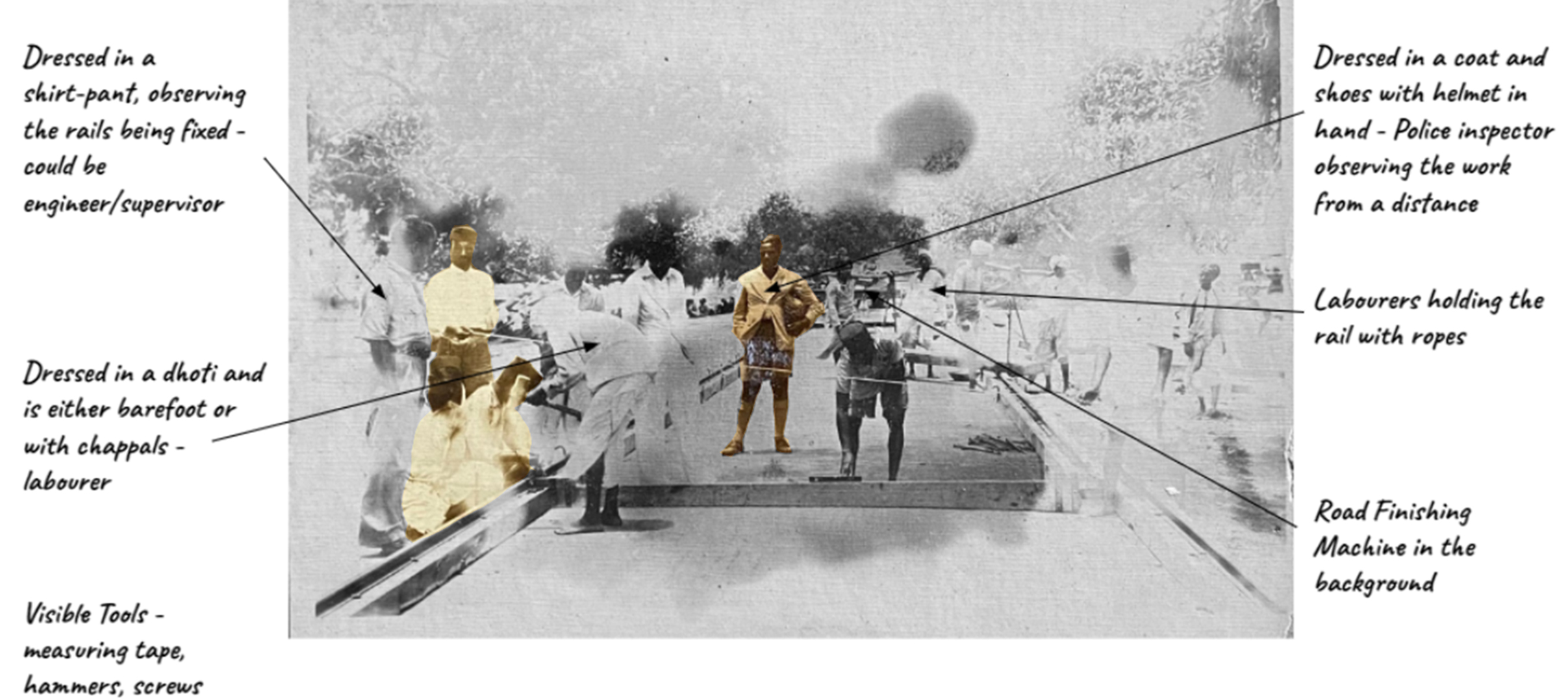Study of Subordinates in the PWD Department (19th - 20th century)
Shivani Iyengar




“While specific protocols were established to navigate the complex hierarchy, roles, and responsibilities within the PWD, it's essential to question whether these protocols were consistently followed with absolute objectivity. It's also crucial to consider whether people of higher ranks such as the sub-engineers or the executive engineers, who proposed transfers, were influenced by their interpersonal relationships with individuals such as the overseers or sub-overseers, possibly based on factors like caste, age, common interests, or other subjective parameters.”
The project aims to draw a profile for the subordinates known as “overseers.” Overseers who could be promoted to other subordinate ranks within the Executive departmental hierarchy in the PWD. Furthermore, drawing upon diverse historical frameworks, such as the concept of "shadow work," which delineates the profiles of individuals hitherto unexamined, marginalized, or lacking in scholarly attention, this article aims to synthesize the experiences of these underrepresented individuals and the complexities inherent within the broader system.
︎ 💬️
Research Mind map
Paper